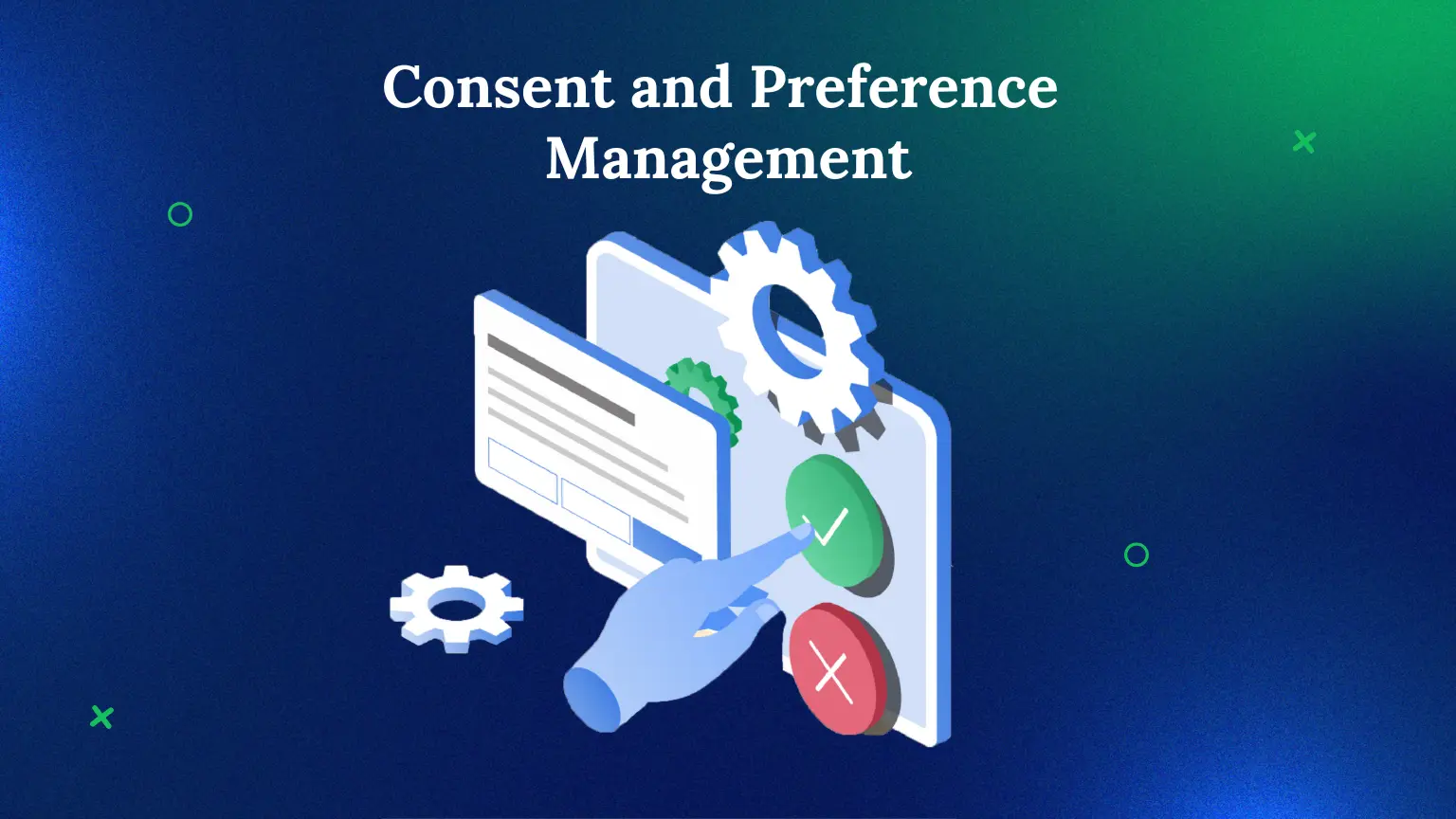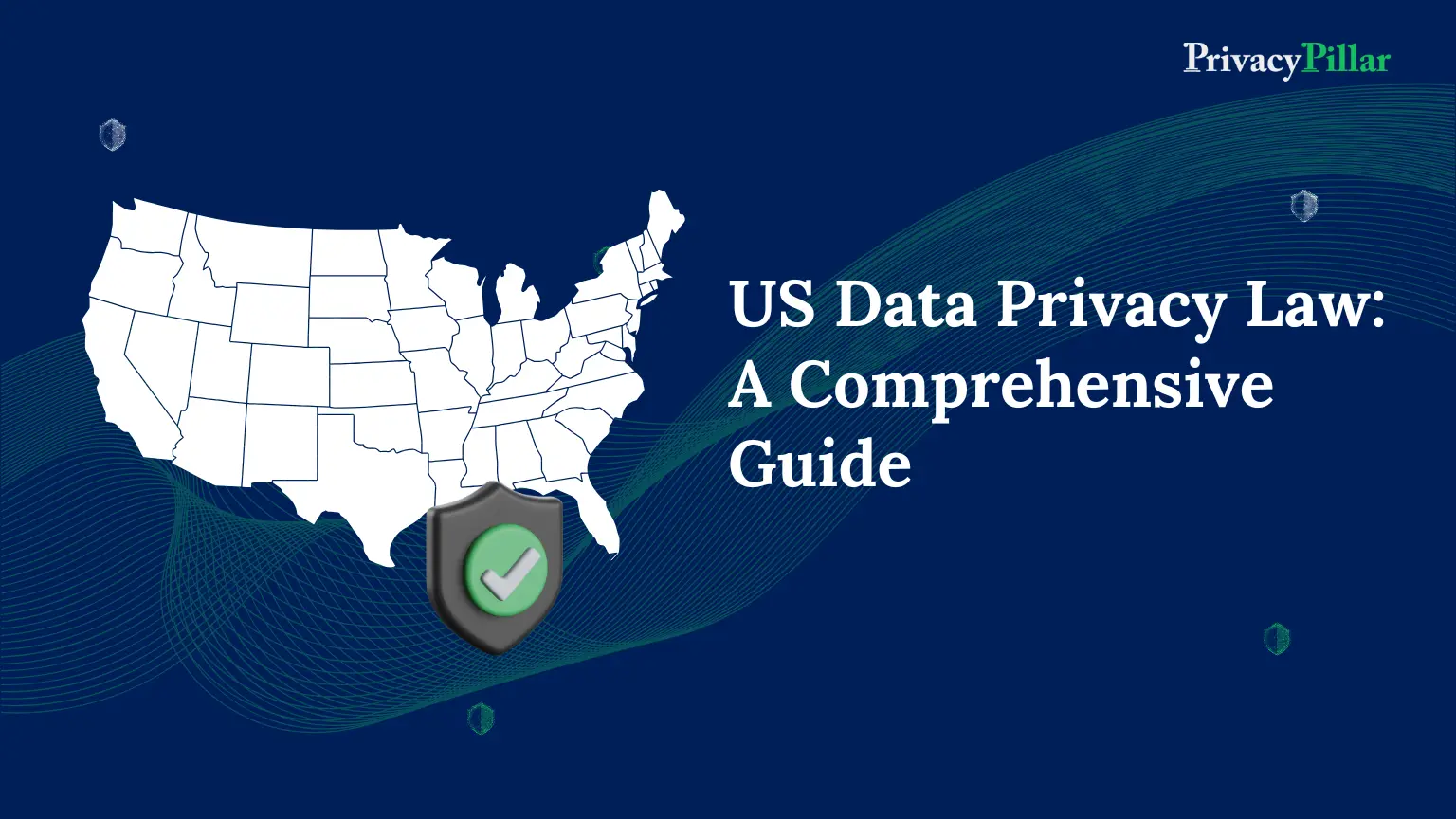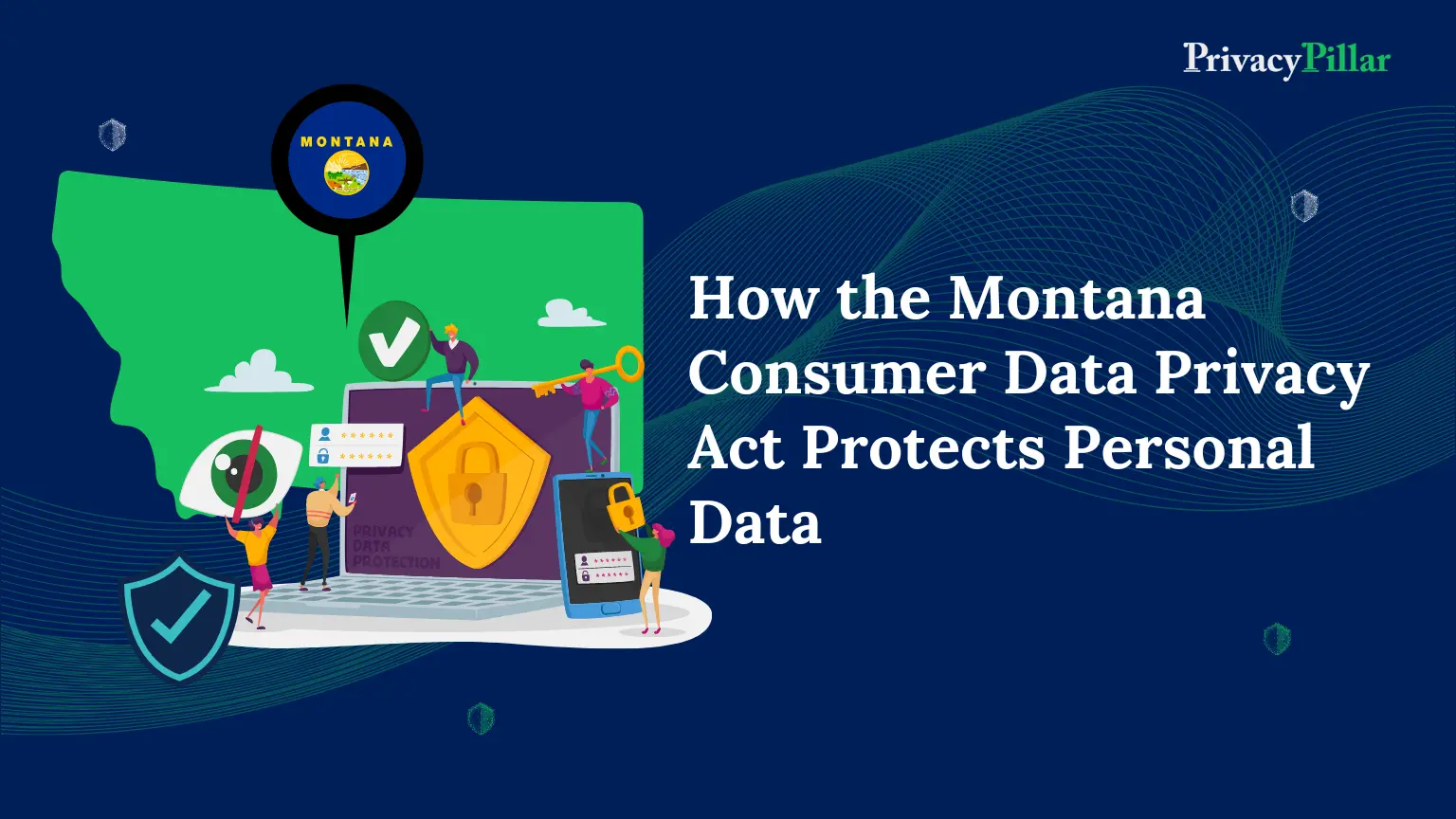
What are Consent and Preference Management: The Ultimate Business Guide
Organizations worldwide must consider consent and preference management as more and more consumers shop online and share personal information, whether through e-commerce sites, banking apps, gaming apps, Facebook, Instagram, or simply browsing.
Today, the foundation for modern privacy compliance is consent and preference management.
Global privacy regulations are becoming stricter, and customers are regaining control over their data.
Because of this, businesses need to be careful about customer preferences and consent.
Customers’ concerns about their digital and online footprints have made consent and preference management more critical.
Preference management and consent management complement one another quite well. But they are not the same.
Although there is a common all-in-one platform for providing both, the terms differ.
Consent and preference management are essential for organizations and their consumers to benefit from good data privacy practices.
If you wish to know how these terms differ, keep reading. This article will help you understand the difference between consent and preference management and several other aspects of these terms.
Consent and Preference Management: Major Differences
Before looking into the differences between the two, it’s essential to understand both terms separately.
What is consent management?
Consent management requests permission from consumers or users of the website before collecting, using, and storing their data for marketing-related purposes.
Customers give away their consent when they accept offers, newsletters, emails, or notifications.
The European Union introduced GDPR consent management to ensure that companies and website owners get customers’ consent for all purposes.
This consent management requires website owners to inform users about the processing of personal data on their domain and get consent from users before enabling cookies that store and process personal data.
The law requires websites to renew consent regularly.
Websites that collect and store personal data must provide simple and valuable methods for users to withdraw their consent.
Since the average cost of non-compliance with the GDPR law is $14.82 million, while the cost of compliance is $5.47 million, it is essential to comply with the GDPR law.
Source- Tamoco
What is preference management?
Preference management refers to the process that allows customers to decide how businesses can contact them.
This management helps a company comply with norms and regulations by putting consumers in control and letting them decide how often to communicate.
Consent management often includes preferences over the kind of content. Consumers select the type of content and updates they wish to receive regarding new products and services.
Customers take charge of your brand’s communication using preference management. Consumers, not businesses, determine when and how often they receive updates.
Studies show that 77% of consumers are willing to pay more, recommend, and choose a business that offers personalized service or experiences. This indicates that preference management is the key to gaining customers’ trust.
Consent Management vs. preference management
We can differentiate between consent management and preference management on the following basis:
Purpose
Consent Management
At first, consent management may seem like a lot of effort, and if the business disregards the process, it will only worsen.
With GDPR fines shooting up in the past few years and companies like Facebook and Google suffering consequences for non-compliance, consent management is essential to minimizing the financial burden on companies.
Ensuring opt-in is mainly done to reduce fines and improve customer loyalty.
While these fines may not affect businesses directly, the cleanup process will probably hurt them.
In addition to making changes to rectify the mistakes, a company may find it difficult to win back consumers’ trust with the wrong brand impression.
Preference management
Preference management, on the other hand, aims to improve consumer trust and drive sales.
It’s how a business maintains and balances privacy and customization while encouraging consumer interaction.
Customers can choose the channel they want to receive communications through preference management.
Impact on business
Consent Management
Consent and preference management have varying effects on businesses, even though they help companies comply with data privacy regulations and empower customers.
Consent management ensures the marketing department does not collect and track consumer cookies unethically.
This ensures that customers will trust you with their information.
Preference management
The marketing team often finds it difficult to consider customer preferences.
The marketing team can identify new market niches and boost an organization’s overall growth with the help of preference management, which gives them access to an extra layer of data.
Users may manage their preferences via preference management, which helps organizations monitor where and when consent is given.
It ensures the consumer is satisfied with the information they receive, gives previous customers the ability to unsubscribe from emails, offers opt-in decision-making, and provides a way for users to sign up for newsletters.
This contributes to creating transparency, a crucial component of a successful brand.
Impact on customer relationship
Consent Management
Customers’ level of trust in a company is determined by their ability to provide consent.
The loyalty of customers increases with the degree of trust. Repeat business follows, and eventually, growth is boosted by this.
Preference management
With preference management, businesses can target customers with communications tailored to their needs and expectations.
Serving material tailored to the customer’s interests results in a better overall experience.
Customers typically consider these businesses sincere and considerate of their needs and wants.
Businesses show that they listen to customers when they respect their consent and follow their preferences.
Personalization creates an improved experience that strengthens bonds between various businesses and their target audiences.
According to studies, 44% of consumers are encouraged to purchase more when a company provides personalized content.
What do privacy laws say about consent and preference management?
The foundations of data privacy standards or guidelines are the California Consumer Privacy Act (CCPA) and the EU General Data Protection Regulation (GDPR).
Businesses must be aware of and record where and when consent is needed.
They must specify who they are, what information they seek, and the purpose behind it.
Additionally, they must allow customers to withdraw their consent at any point in the data processing process and explain how customers can do so.
Beyond the standards set by the GDPR, the CCPA allows customers to stop businesses from selling their personal information to third parties.
Industries affected by consent and preference management
Any industry that wishes to collect consumer data must use consent and preference management strategies.
Publishers, for example, who rely on the sale of advertising for revenue, must disclose the methods by which they collect and use readers’ personal information and the option for them to opt out.
Another example applies to retail businesses. Companies may send out product updates to their customers.
Businesses can collect purchase and search histories—information that some consumers may not want to share—to make this easier.
Types of trends in consent and preference management
Accuracy and efficiency are the driving factors behind data privacy demands.
Using automated tools to help ensure compliance is the most significant trend in consent and preference management.
By allowing website users to manage their cookie preferences, a consent and preference management platform such as the one provided by PrivacyPillar enables businesses to comply with global privacy regulations.
Because many businesses serve a global customer base, they must abide by all laws in the areas where they conduct business; otherwise, they risk fines and other disciplinary measures.
Platforms for managing preferences and consent can facilitate this process and save businesses from penalties.
User experience trends about consent management and preference management
A survey found that nearly 71% of customers want control over how their data is used and tracked and that the same percentage of people will disclose their information if they have that control.
Read More: 50+ Data Privacy Statistics
Consumers expect businesses to allow them to withdraw consent, unsubscribe, or modify their preferences anytime.
According to the study, customers want ownership over their data, and the know-how businesses use to tailor their marketing campaigns.
Most customers believe that since it’s their data, they should be able to choose what happens to it.
That is the exact situation in which data privacy regulations such as the CCPA and GDPR are necessary.
How are consent and preference management being enforced right now?
The GDPR mainly impacts the European Union, even though it impacts privacy regulations globally.
Each member state appoints a Data Protection Authority to oversee enforcement. The GDPR has led to an increase in sound privacy policies since its start.
There have been fines amounting to slightly more than 1.6 billion euros.
The California Office of the Attorney General is in charge of CCPA enforcement.
If this trend continues in the US, each state’s regulatory enactments will be subject to enforcement.
Since it became effective, there has been a rise in compliance.
How do companies focus on consent and preference management?
Organizations that try to handle everything independently may find themselves in difficult situations regarding privacy laws, consent management, and preference management.
Running a profitable business and complying with various data privacy laws can be difficult.
This is why firms use consent and preference management systems for peace of mind.
These solutions ensure compliance with the GDPR and CCPA and that vendors and other third-party businesses do not expose an organization to non-compliance risks.
Existing solutions for consent management
Transparency is an essential element that customers require, and an automated consent and preference management platform may help.
Accurate compliance maintenance helps close gaps in many data privacy management systems, particularly those run by understaffed organizations with undertrained personnel.
Mistakes may give rise to breaches and legal action.
A consent management platform can keep businesses up-to-date and make it easier to expand functionality than an in-parts system as new states and nations enact regulations to protect data.
Existing solutions for preference management
The most important thing businesses can do to ensure compliance and show customers that they respect their privacy decisions is to have an automated platform that helps with preference management.
Using a preference management platform, businesses can collect preferences through website pop-ups, email and newsletter sign-up forms, and subscription enrollment windows.
A platform for managing preferences can also give you information about the products and services that customers are most interested in.
This can help determine a brand’s best route for marketing efforts.
Businesses might feel more confident about their business practices.
Conclusion: Creating a thriving marketing strategy
Organizations’ methods of customer marketing are changing constantly.
They are compelled to base their strategy on customer consent and preference because of the enactment or launch of privacy regulations almost every month.
In today’s world, managing preferences and getting consent are essential measures. It is becoming a crucial component of marketing strategies.
An increasing number of governments and nations are putting their privacy laws into effect, thanks to legislation and regulations like the CCPA and GDPR that make implementation mandatory.
Six of the 14 highest GDPR fines imposed between 2020 and 2021 resulted from violations of the GDPR’s consent management clause.
Source: Tamoco
Businesses prioritizing consent and preference management can better convey to their customers that they value their privacy and confidentiality.
Businesses can overcome the shortcomings of their data privacy approaches with solutions like PrivacyPillar.
We help your organization improve customer service, reduce compliance load, and foster consumer trust.



